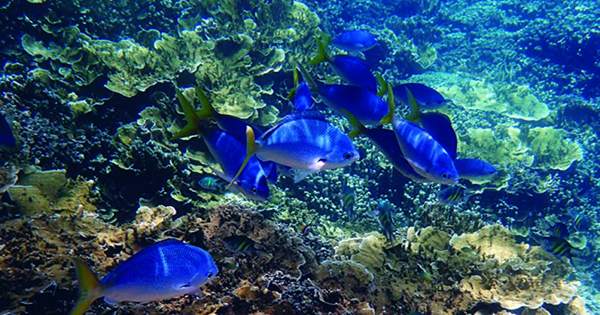The Great Barrier Rift suffered its third mass bleaching event in five years as an Australian government aviation survey identified widespread bleaching across its borders. Although the island nation has seen cooler temperatures lately, the Australian summer – especially in mid-February – has seen a one-fold increase in heat that has led to a variety of bleaching across the reef.
Water and aircraft surveys conducted by the Australian Government Great Barrier Reef Marine Park Authority in collaboration with the Australian Research Council Center of Excellence of Coral Reef Studies at James Cook University have so far observed an additional 344,000 sq. km (133,000 sq. mi) over 800 reefs. Such studies have provided a wide variety of results; some did not see any type of bleach, others were determined to be “very serious” by bleaching 80 percent or more of the coral. The most heat bleaching has been in the reefs that have undergone the most heat stress.
As far as these results are concerned, this is certainly not all bad news, said Chief Scientist Dr. in the weekly Reef Health Update. David Wachenfeld said. The pockets of the reef remain unprotected and the healthy areas of the sheet are still intact. In fact, all offshore reefs had little or no bleach, and there are still many reefs in the southern part of the park that have seen little or no bleaching this year.
The agency writes, “Keep in mind that bleached corals are not dead corals – most bleached corals in light or moderately bleached reefs have a good chance of recovering and surviving this event.” “Equally, in severely bleached reefs, there will be high coral mortality.” Compared to data collected so far in 2016 and 2017, one-third of the park saw no or minor bleaching, one-third had moderate bleaching, and the remaining three had severe bleaching. Although no pattern consistent with this was observed.
In the far north, many previous surveys of coastal walls have seen bleaching for the third time in years after moderate to severe bleaching. Similarly, in the southern half where bleaching did not occur before, some reefs are now experiencing severe bleaching for the first time. Additionally, some key tourist areas – particularly the northern and central Great Barrier Reefs – have shown only moderate types of bleaching that researchers hope will give them a chance to recover and survive.
The marine park authority writes in a statement, “With the completion of the aircraft survey this week, we can better understand the magnitude and intensity of this bleaching incident. There will be more analysis in the next world.” The agency’s experts believe that the single biggest challenge for reefs remains climate change. The agency continues to monitor and implement conservation strategies and programs to maintain and promote reef health.















